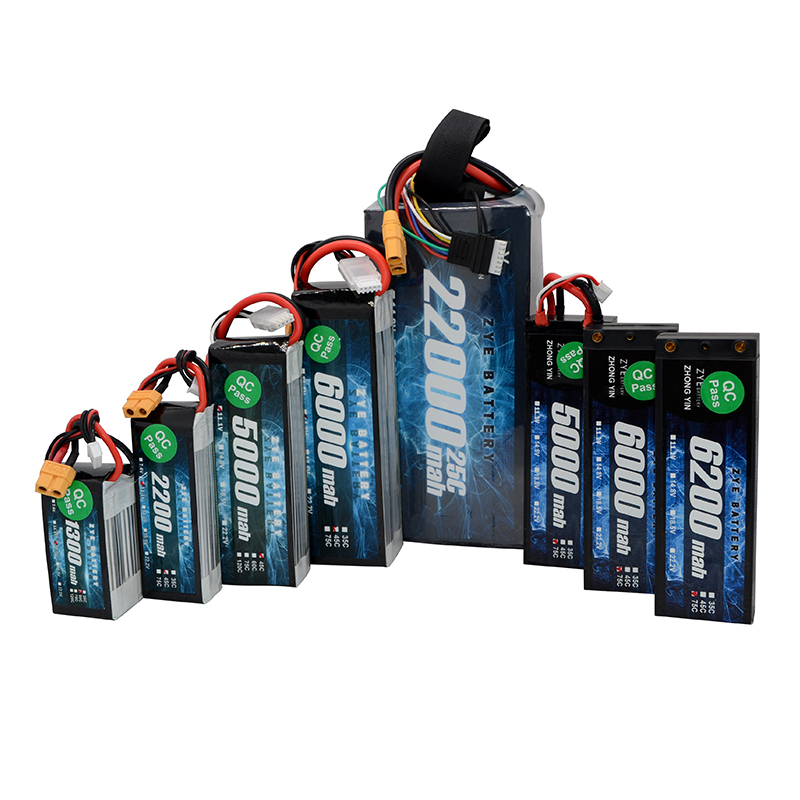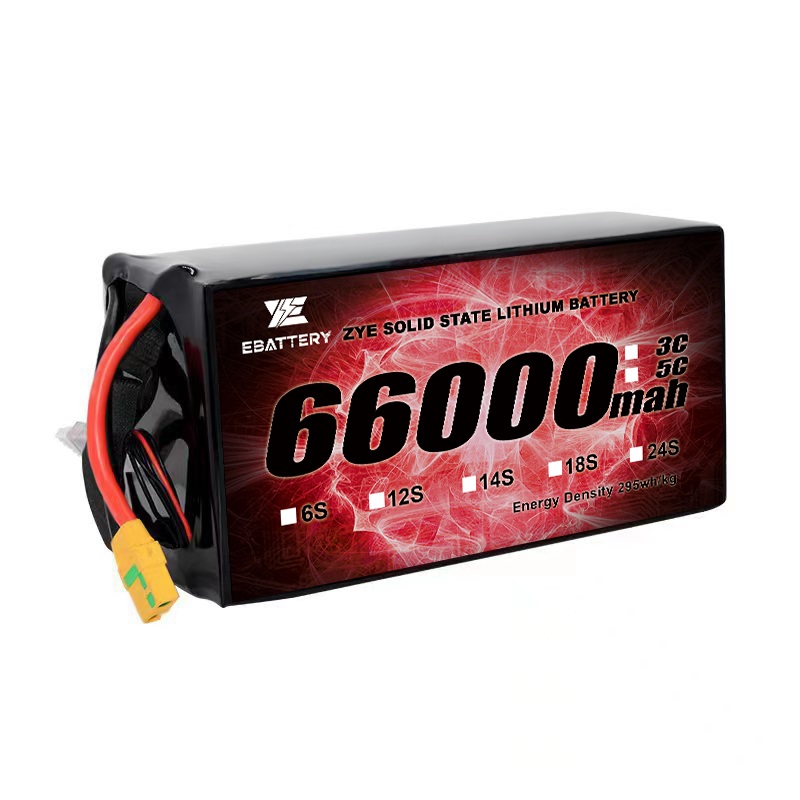The differences between lipo batteries and semi-solid state batteries?
2025-10-21
The Evolution of Drone Power: The Ultimate Showdown Between LiPo and Semi-Solid-State Batteries
For drone pilots, range anxiety and safety concerns remain persistent challenges. At the heart of these issues lies the drone's power source—the battery. For years, lithium polymer batteries have dominated both consumer and industrial drones. Now, however, a technology called “semi-solid-state batteries” is maturing. This article delves into a comparative analysis of both, revealing their fundamental differences and future trajectories.

I. Lithium Polymer Batteries
1. Technical Principles and Characteristics:
Lithium polymer batteries utilize gel-like or solid-state polymer electrolytes. Their core advantages include:
High Energy Density: Storing substantial electrical energy within a relatively lightweight package
High Discharge Rate: Delivering instantaneous high currents to meet the demanding power requirements during drone takeoff, ascent, and high-speed maneuvers.
Customizable Form Factor: The polymer electrolyte enables cells to be manufactured in thin, rectangular, or various other shapes, optimizing utilization of irregular internal spaces within drones.
2. Limitations in UAV Applications:
Despite mature technology and manageable costs, LiPo batteries' inherent flaws are starkly exposed in UAV applications:
Safety Concerns: This is LiPo's most critical weakness. The flammable and explosive liquid organic electrolyte readily triggers thermal runaway during physical puncture, overcharging, or internal short circuits, leading to fires or explosions.
Short Cycle Life: High-quality LiPo batteries typically have a full cycle life of around 300-500 cycles, after which performance degrades significantly.
Poor Environmental Adaptability: Performance drops sharply in low-temperature environments, drastically reducing runtime and power output.
II. The Rise of Semi-Solid-State Batteries
Semi-solid-state batteries represent a milestone in solid-state battery technology development. Rather than completely eliminating liquids, they incorporate substantial solid components (such as solid electrolytes) within electrodes or electrolytes while retaining partial liquid electrolytes to ensure ionic conductivity efficiency.
1. Technological Leap and Core Advantages:
Significant Enhancement in Intrinsic Safety: Semi-solid technology drastically reduces the content of flammable liquid electrolytes, fundamentally lowering the risk of thermal runaway. Its solid components exhibit superior thermal stability, effectively suppressing open flames and explosions even under puncture conditions. This represents a revolutionary advancement for drones, where flight safety is paramount.
Breakthrough in Energy Density: Semi-solid batteries can utilize higher-capacity electrode materials, achieving theoretical energy densities 30%-50% higher than equivalent-weight LiPo batteries—or even greater. This means drones can fly longer on the same weight.
Longer Cycle Life: Solid-state electrolytes exhibit fewer side reactions with electrode materials and offer greater structural stability, enabling them to withstand more charge-discharge cycles. Their lifespan is expected to exceed 1,000 cycles, significantly reducing total lifecycle costs.
2. Current Challenges in Drone Applications:
High Cost: New materials and manufacturing processes result in significantly higher production costs compared to mature LiPo batteries.
Power Output Optimization Needed: Despite high energy density, their instantaneous high-current discharge capability (power density) may currently fall slightly short of top-tier competition-grade LiPo batteries. This could be a limitation for racing drones pursuing extreme thrust.
Immature Supply Chain: Mass production capacity, supply chains, and supporting BMS technology are still developing, making them less readily available than LiPo batteries.
III. Conclusion: Coexistence and Complementarity of Both Battery Types
Present: LiPo Batteries Offer Superior Cost-Effectiveness
Over the next 2-3 years, LiPo batteries will remain the dominant choice for consumer aerial photography drones and FPV racing drones due to their mature supply chain and unmatched power output. For most hobbyists and commercial users, they will continue to represent the most cost-effective solution.
Future: The Technological Revolution of Semi-Solid-State Batteries
Semi-solid-state batteries will first gain traction in applications demanding extreme safety, endurance, and longevity. Examples include:
Logistics Drones: Extended range enables larger single-delivery coverage areas, while enhanced safety allows operation in densely populated zones.
Industrial Inspection Drones: Demands for prolonged missions and high-value equipment necessitate batteries with exceptional longevity and reliability.
High-End Aerial Surveying & Public Safety Drones: Increased airborne endurance facilitates mapping or search operations over larger areas.
Conclusion:
Semi-solid-state batteries point toward a new era of drones that are safer, more durable, and more powerful. As pilots or industry users, understanding this transformation helps us make wiser choices today and prepare for the upcoming power revolution.

























































